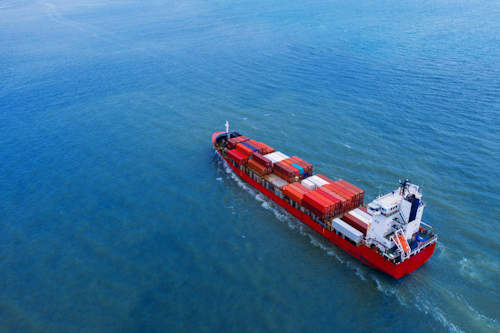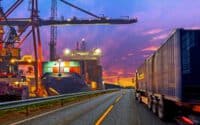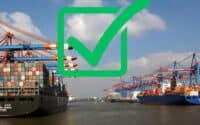25 Upgrade ideas to Modernize a Cargo Ship

In the dynamic world of maritime commerce, the race isn’t just about reaching destinations swiftly but evolving with the tides of technology, safety, and environmental responsibility. As cargo ships crisscross our vast oceans, bridging continents and economies, their ability to remain efficient, resilient, and sustainable is paramount. The age-old giants of trade are now standing at the helm of a technological revolution. From harnessing renewable energies to the integration of robotics, cargo ships are being reimagined and retrofitted to sail seamlessly into the future. Dive into our comprehensive guide on the top 25 upgrade options, setting a course for the modern cargo ship’s transformative journey.
* Please send feedback/suggestions to editor @ shipuniverse.com
- Fuel Efficiency Systems: Implement advanced fuel management systems to monitor and optimize fuel consumption. Consider technologies such as air lubrication systems that create a carpet of bubbles underneath the ship to reduce friction.
- Ballast Water Treatment Systems: Integrate systems to treat ballast water and eliminate harmful organisms, ensuring compliance with international ballast water management regulations.
- Larger & More Efficient Cranes: Upgrade to larger, faster, and more energy-efficient cranes to speed up loading and unloading processes, improving turnaround time.
- Scrubber Systems: Install exhaust gas cleaning systems or “scrubbers” to reduce sulfur oxide emissions and meet the requirements of the International Maritime Organization (IMO) regulations.
- Renewable Energy Integration: Equip ships with solar panels or wind propulsion systems to harness renewable energy, thereby reducing fuel consumption and emissions.
- Advanced Navigation Systems: Upgrade to state-of-the-art navigation tools and software that utilize AI and real-time data for route optimization, improving safety and fuel efficiency.
- Safety Enhancements: Invest in advanced fire detection and suppression systems, as well as modern life-saving equipment.
- Digital Connectivity: Implement high-speed satellite internet connectivity, allowing for better communication, real-time data sharing, and remote diagnostics.
- Hull Modifications: Consider hull modifications or the application of advanced coatings to reduce resistance, leading to better fuel efficiency.
- Automated Cargo Handling & Management Systems: Upgrade to automated systems that streamline cargo handling, stowage planning, and tracking. This not only enhances efficiency but also minimizes human error.
- Hybrid Propulsion Systems: Implement a hybrid propulsion system, combining traditional fuel with electric power, optimizing energy consumption and potentially reducing emissions.
- Energy Storage Systems: Install battery systems to store excess energy, allowing for peak shaving and load leveling, thus ensuring energy efficiency.
- Advanced Waste Management: Incorporate compactors, recyclers, and advanced waste treatment systems to manage ship-generated waste responsibly and reduce environmental impact.
- Anti-Fouling Systems: Apply advanced anti-fouling hull coatings or ultrasonic systems to prevent marine growth, which can increase drag and reduce fuel efficiency.
- Vibration Reduction: Upgrade the ship’s machinery mounting and incorporate structural modifications to minimize vibrations, enhancing onboard comfort and potentially extending the lifespan of certain equipment.
- Automated Monitoring Systems: Integrate sensors and IoT devices across the ship to provide real-time feedback on machinery status, structural integrity, and other critical parameters, enabling proactive maintenance.
- Enhanced Cargo Securing Systems: Modernize and automate cargo securing mechanisms to ensure stability, safety, and faster turnaround times, especially in rough sea conditions.
- Onboard Training and Simulation: Implement onboard training systems, including simulators, to allow crew to constantly hone their skills, especially in navigation, machinery operation, and emergency response.
- Noise Reduction Measures: Introduce noise-reducing materials and techniques in the ship’s design, improving crew well-being and adhering to noise pollution standards.
- Advanced Weather Forecasting Systems: Equip the vessel with real-time, route-specific weather forecasting systems that can provide insights into ocean currents, wind patterns, and storm predictions, ensuring safer and more efficient voyages.
- Crew Welfare Systems: Introduce advanced onboard entertainment and communication systems to keep crew members connected with their families and entertained during long voyages. This can boost morale and reduce crew turnover.
- Green Retrofitting: Integrate green technologies such as LNG (Liquefied Natural Gas) retrofits to meet emerging environmental regulations and reduce the ship’s carbon footprint.
- Cold Ironing Capability: Equip ships with the necessary infrastructure to allow for “cold ironing” – using shoreside electrical power in place of onboard generators when docked. This reduces emissions at ports.
- Cargo Handling Robotics: Introduce automated robotic systems for handling certain types of cargo. These systems can increase loading and unloading speed, accuracy, and safety, especially for hazardous or sensitive cargo.
- Enhanced Ballasting Systems: Upgrade ballasting systems to be more efficient, both in terms of time and energy usage. Consider using innovative solutions like vacuum ballasting to increase the rate of ballast water intake and discharge.

Do you have a Maritime Product or Service that may be of interest to Shipowners? Tell us about it here!
Do you have feedback or insights? Please reach out to editor @ shipuniverse.com



